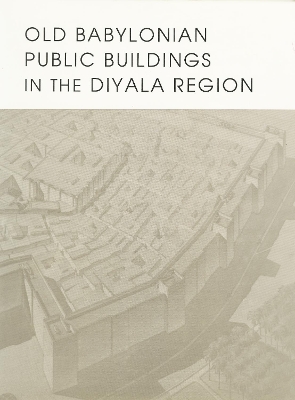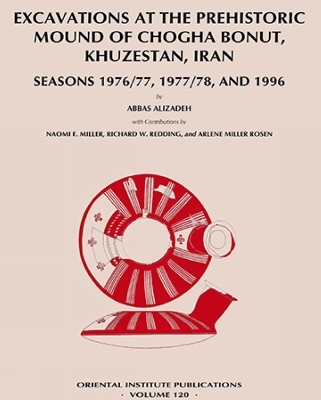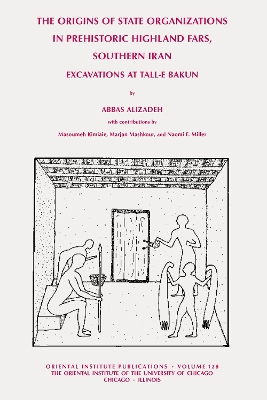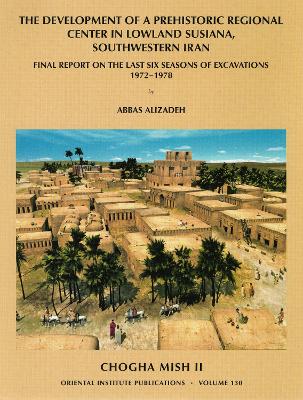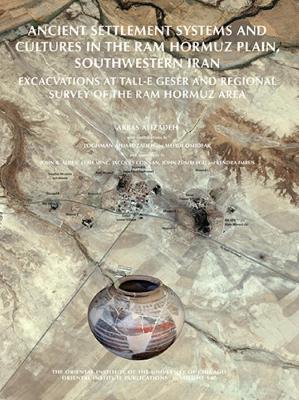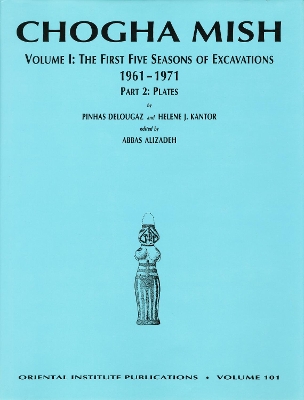Oriental Institute Publications
6 primary works • 15 total works
XLIII
The Gimilsin Temple and the Palace of the Rulers at Tell Asmar
by Henri Frankfort, Seton Lloyd, and Thorkild Jacobsen
Book 98
Old Babylonian Public Buildings in the Diyala Region. Part One
by Pinhas Delougaz, Harold D. Hill, and Thorkild Jacobsen
Book 126
Excavations at the prehistoric mound of Chogha Bonut, Khuzestan, Iran
by Abbas Alizadeh
This volume presents the results of three seasons of excavations at Chogha Bonut, Lowland Susiana, in the modern-day province of Khuzestan, southwestern Iran. Susiana was a major contributor to the cultural development of the ancient Near East, and thanks to more than a century of archaeological investigation, it is also the best known region in the entire area. Excavations at numerous sites, but primarily at Susa and Chogha Mish in Susiana, have provided a long sequence of archaeological phases that span some 8,000 years, from early prehistoric times to the early Islamic period. The initial phases of the colonization of Susiana by early farmers, however, remained unknown until a series of excavations at Chogha Bonut pushed the earliest period of occupation of Susiana to the aceramic phase, ca. 7200 BC. The results of these excavations add to the already rich picture of cultural development in the region, the initial chapter of human adaptation in the early phases of village life in the Near East.
Book 128
The Origins of State Organisations in Prehistoric Highland Fars, Southern Iran
by Abbas Alizadeh
Book 130
Book 140
Ancient Settlement Systems and Cultures in the Ram Hormuz Plain, Southwestern Iran
by Loghman Ahmadzadeh, John R. Alden, Abbas Alizadeh, Jacques Connan, Kendra Imbus, Leah Minc, Mehdi Omidfar, and John Zumberge
After a decade-long hiatus in the years of World War II, archaeological fieldwork was resumed in Iran in 1948. In that year, the Oriental Institute returned to its long tradition of archaeological research by sending Donald McCown to the lowlands of southwestern Iran to conduct a series of surface surveys to find a multi-period site for excavation.
For his survey, McCown chose the Ram Hormuz region, southeast of lowland Susiana and the region south and east of the provincial town of Ahvaz down to the Persian Gulf. McCown recorded 118 sites in the Ram Hormuz and Ahvaz areas and eventually chose for excavation the large prehistoric mound complex Tall-e Geser.
Three months of excavation in 1948 and 1949 yielded materials that were kept in Chicago for many years. Apart from short articles, the site was never fully published. In Part 1 of this two-part volume, Abbas Alizadeh and colleagues have undertaken a final publication of the site. This task was undertaken because of a number of important considerations. First, the excavations at Geser have been cited as justifying the division of the Uruk period in southwestern Iran into Early, Middle, and Late phases. Second, Geser remains the only systematically excavated site in the Ram Hormuz region - a strategic location between the Susiana and Mesopotamian alluvium and the Zagros highlands of southwestern Iran. Third, Geser has produced a very extensive body of archaeological materials dating to the comparatively less understood proto-Elamite period, roughly the first few centuries of the third millennium bc. And finally, with the exception of a 700-800-year gap following the proto-Elamite phase, Geser remains one of the only sites in the Near East to have a very long and generally uninterrupted depositional sequence, in this case spanning from the fifth millennium BC to the Safavid period.
The site's crucial location, its importance in the archaeological literature, and its long stratigraphic sequence made it imperative that the original excavation results from Geser be published in anticipation of a time when the site can be re-excavated. Part 2 of this volume presents the results of regional surveys conducted in the Ram Hormuz plain from 2005 to 2008, which were undertaken by Alizadeh and colleagues with the goal of understanding the semi-nomadic, mobile component of lowland Susiana and its hinterlands through time.
Chogha Mish. Volume 1
by Pinhas Delougaz, Helene J Kantor, and Abbas Alizadeh
Frank's superb work, first published in 1948 and now supplemented with a preface by Samuel Noah Kramer, demonstrates how the Egyptian and Mesopotamian attitudes toward nature related to their concept of kingship. In both countries the people regarded the king as their mediator with the gods, but in Mesopotamia the king was only the foremost citizen, while in Egypt the ruler was a divine descendant of the gods and the earthly representative of the God Horus.

